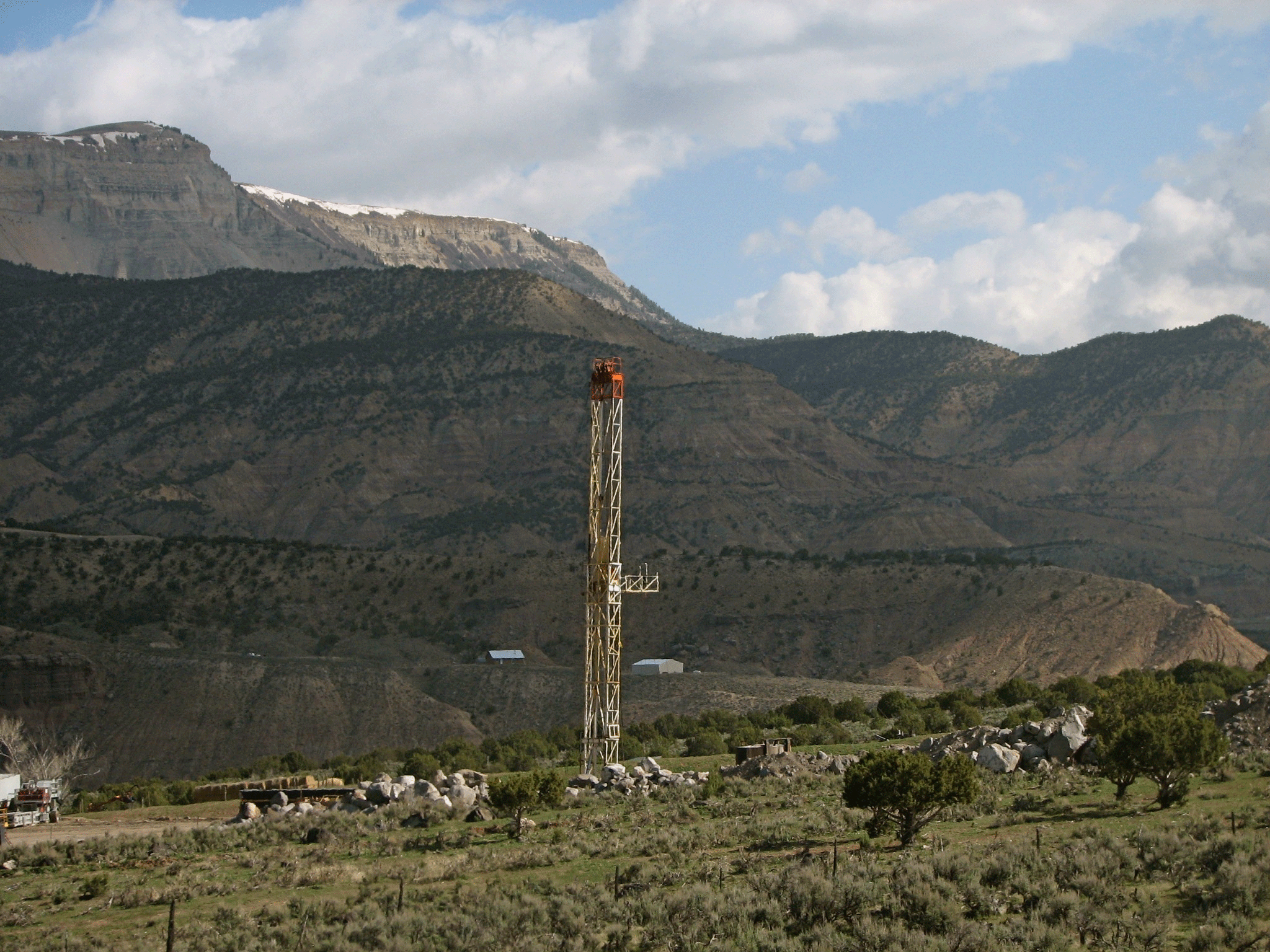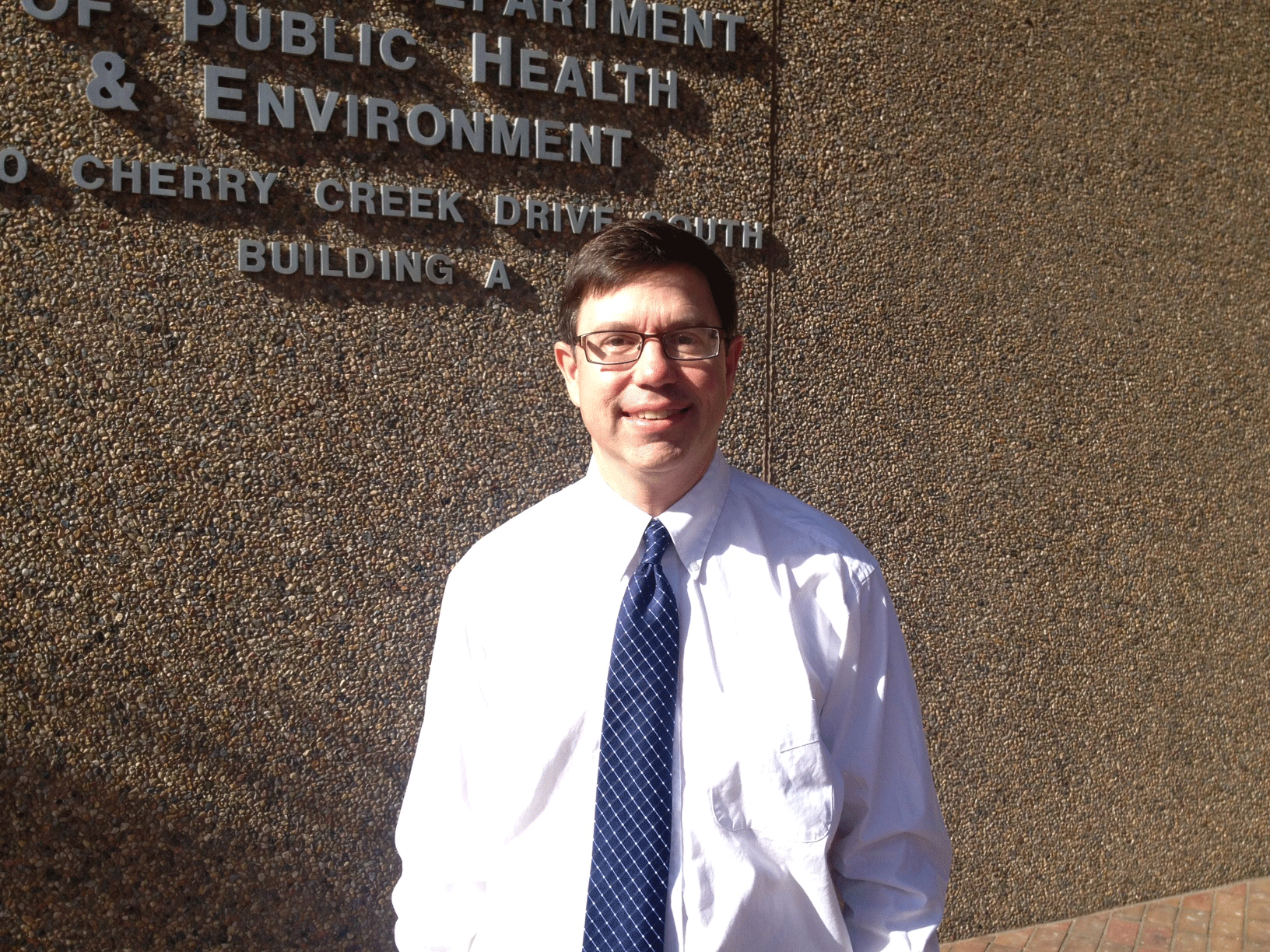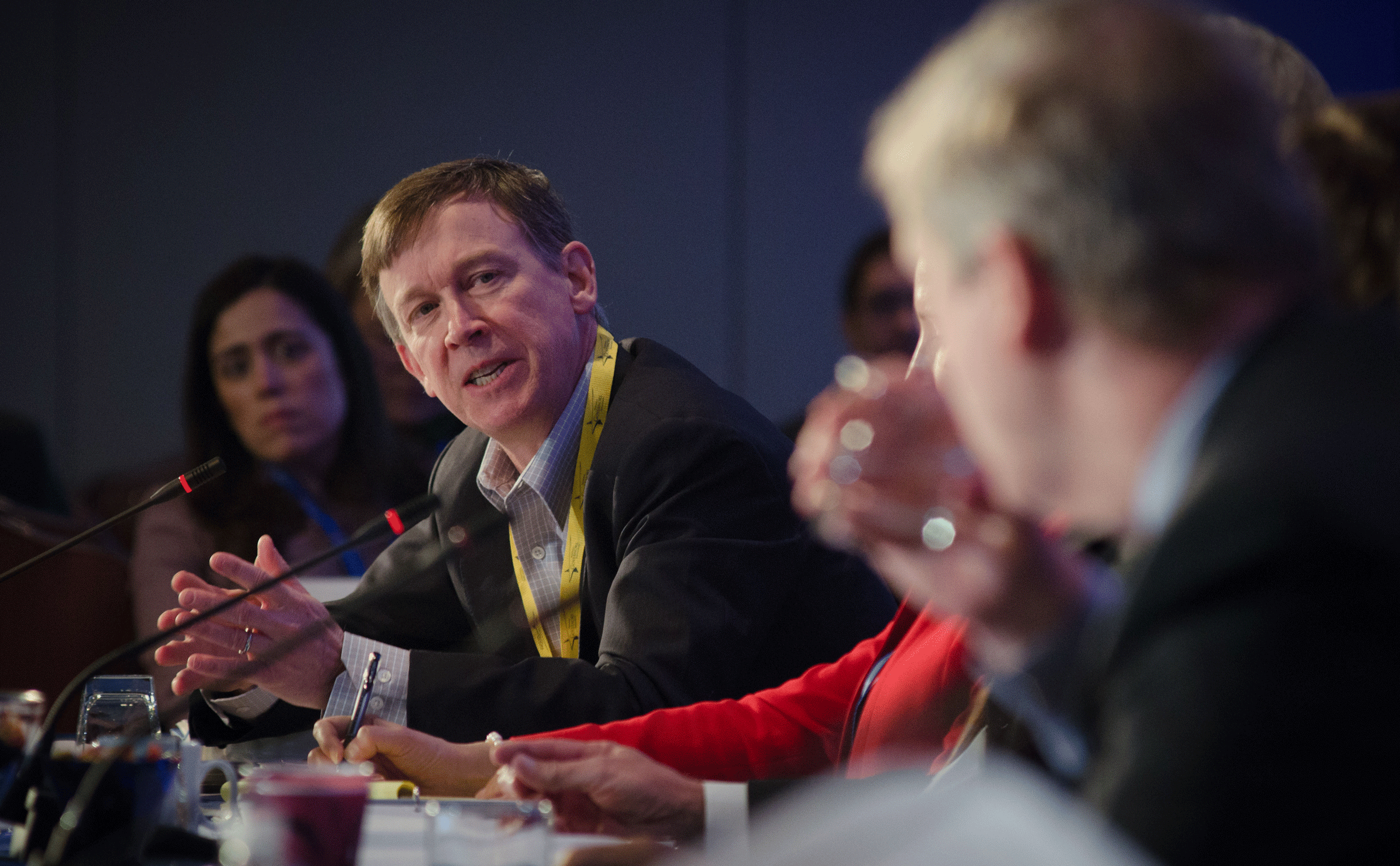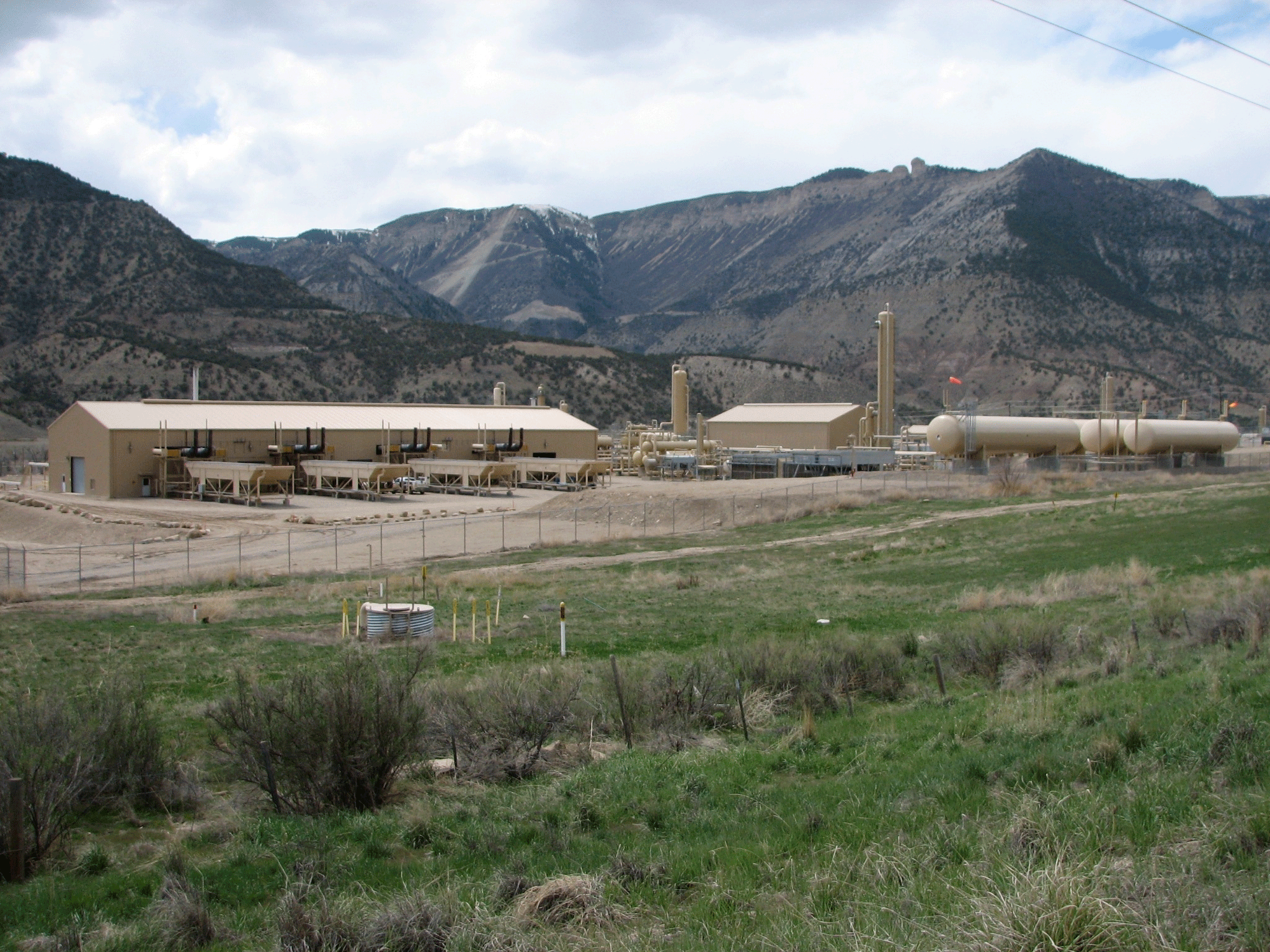Colorado Reins in Fracking Air Pollution
Air Date: Week of February 28, 2014

Natural gas rig in the Piceance Basin in Colorado (photo: Energy Tomorrow, Creative Commons 2.0)
The fracking boom has boosted emissions of toxic chemicals as well as releases of methane, a potent greenhouse gas. State regulator Garry Kaufman tells host Steve Curwood that Colorado has become the first state to respond with tighter regulations of methane and toxic emissions from natural gas and oil production.
Transcript
CURWOOD: While Texas may be slow to act, Colorado recently became the first state to respond to the fracking boom with new regulations on emissions from oil and gas production.
The new rules go after methane, a potent greenhouse gas as well as volatile organic compounds which pose health risks. Joining us now is Garry Kaufman, deputy director of the Colorado Department of Public Health and Environment’s Air Pollution Control Division.
He says figuring out exactly where the emissions are coming from is half the battle.
KAUFMAN: One of the challenges with the oil and gas industry is that they have a whole variety of emission points, some of which are big, and some of which are small. So you really have to attack them one by one identifying the most significant sources, and then coming up with strategies that can be used to reduce those.

Garry Kaufman, Deputy Director of the Colorado Department of Public Health and Environment’s Air Pollution Control Division (photo: Colorado Department of Public Health and Environment)
CURWOOD: So what’s a big typical place that you might get emissions?
KAUFMAN: Well, one of the largest sources of emissions from production sites are actually from oil storage tanks. Oil would be put into an atmospheric storage tank, and in that process, they’ll be what we call “flashing” of emissions when you get a pressure drop from high pressure liquid that’s underground to the atmospheric pressure and that really creates a significant source of emissions. Another area would be just the cumulative leaks that you get from a facility. As you can imagine, these are fairly complex facilities with lots of piping and lots of different components including valves and couplings and pumps. All of which can leak if they’re not properly maintained. So, one of the things that we’ve done as part of our regulations is require a pretty comprehensive leak detection or repair program that requires operators to go out at varying frequencies depending on the size of the facility and using an infrared camera or other device to identify the leaks and then get them repaired.
CURWOOD: Now, methane is a really tiny molecule. Anytime it gets loose, it just wants to go up into the atmosphere, huh?
KAUFMAN: That’s absolutely true.
CURWOOD: Now as I understand it, you put this together with the fairly enthusiastic cooperation of industry. How did you manage to do that?
KAUFMAN: Well, it was a lot of hard work. Thankfully our governor, Governor John Hickenlooper deserves a lot of credit because he really stepped in behind the scenes and really worked with some of the big parties to encourage them to work with each other and come up with a set of solutions that were pretty tough but could also be implemented by the industry.
CURWOOD: In other words, the government knocked a few heads together.
KAUFMAN: I think absolutely. The governor got in there, and I wasn’t in the room when he did it, but I know we had gotten a fair amount of agreement on a number of issues, but there was still some pretty substantial gaps between where the environmental groups were and where the industry groups were and he went in there and knocked a few heads and got an agreement out of them, which I think is great.

CAPTION (Photo: CREDIT)
CURWOOD: So, what’s the scale of methane emissions in your state...methane emission problems, I should say?
KAUFMAN: Well, I think that, you know, it’s one of the elements of our overall greenhouse gas emissions in the state, methane from the oil and gas industries. It’s a pretty significant element. It’s not quite as large as CO2 emissions from vehicles or CO2 emissions from electric generation. But it’s sort of in that next tier along with some emissions from coal mines, and agriculture is a fairly source of emissions. So they’re sort of the next biggest things. They are things that haven’t been addressed by some of the federal rules like the power plant emissions and the vehicle emissions so it’s really a logical step for Colorado to move into to try and reduce our greenhouse gas footprint.
CURWOOD: What are the public health impacts of these kinds of methane emissions?
KAUFMAN: Well, methane itself is primarily a concern on a more global scale, really in a couple of ways. Certainly I think a lot of interest right now with methane is that it’s a potent greenhouse gas, so it adds to the overall climate change burden, it also can be on a more global scale a precursor of background ozone levels, which is unhealthy for people. In addition to methane, a lot of the requirements that we’re instituting will also get pretty significant reductions of volatile organic compounds, which are a more direct precursor of ozone. And currently some of our parts of the state are out of attainment with federal air quality requirements for ozone, so part of the impetus of the rulemaking is not only on the climate change side, but also to reduce precursor emissions that lead to high levels of ground-level ozone.

Williams’ Cottonwood Creek natural gas processing plant in Parachute, Colorado. When the oil is stored in above-ground tanks, the drop in pressure can cause methane emissions (photo: Energy Tomorrow, creative commons 2.0)
CURWOOD: Now, natural gas has been described as a bridge fuel to clean energy. What do you think of that, and how do the new Colorado regulations fit into this?
KAUFMAN: We as a state have identified natural gas both as a fuel for generating electricity and also as a fuel for vehicles. It’s a really good climate change strategy because on a per unit basis, it has a lot less carbon impact than traditional gasoline or certainly than coal for coal-fire generation. To really maximize those benefits though, it’s important that we don’t lose some of the benefit by having methane leaking out various parts of the production cycle, so I think it really does put us in a good footing as we move forward to have an industry that can be used to generate this cleaner burning fuel, but to do so in a way that doesn’t diminish some of the benefits from that.
CURWOOD: They say imitation is one of the most sincere forms of flattery. To what extent do you think other states will follow the example of Colorado, perhaps using your regulations as a template?
KAUFMAN: Well, we’ve gotten a lot of inquiries from other states as well as from the national Environmental Protection Agency about our regulations.
CURWOOD: Which states are calling you up?
KAUFMAN: Well, I’ve talked to Pennsylvania and had some discussions with them, we had some discussions with Wyoming, had some discussions with North Dakota. Staff I think has had discussions with some other states, and I’ve got an inquiry about six or seven months ago from North Carolina who’s got some interest in some new development in their state.
CURWOOD: Not Texas though.
KAUFMAN: I personally have not heard from Texas. This doesn’t mean we don’t have people on our staff who haven’t had conversations with them.
CURWOOD: Gary Kaufman is the deputy director of the Colorado Department of Public Health and Environment’s Air Pollution Control Division. Thanks so much for taking the time with me, Gary.
KAUFMAN: Thanks for having me on the show.
Links
Living on Earth wants to hear from you!
Living on Earth
62 Calef Highway, Suite 212
Lee, NH 03861
Telephone: 617-287-4121
E-mail: comments@loe.org
Newsletter [Click here]
Donate to Living on Earth!
Living on Earth is an independent media program and relies entirely on contributions from listeners and institutions supporting public service. Please donate now to preserve an independent environmental voice.
NewsletterLiving on Earth offers a weekly delivery of the show's rundown to your mailbox. Sign up for our newsletter today!
 Sailors For The Sea: Be the change you want to sea.
Sailors For The Sea: Be the change you want to sea.
 The Grantham Foundation for the Protection of the Environment: Committed to protecting and improving the health of the global environment.
The Grantham Foundation for the Protection of the Environment: Committed to protecting and improving the health of the global environment.
 Contribute to Living on Earth and receive, as our gift to you, an archival print of one of Mark Seth Lender's extraordinary wildlife photographs. Follow the link to see Mark's current collection of photographs.
Contribute to Living on Earth and receive, as our gift to you, an archival print of one of Mark Seth Lender's extraordinary wildlife photographs. Follow the link to see Mark's current collection of photographs.
 Buy a signed copy of Mark Seth Lender's book Smeagull the Seagull & support Living on Earth
Buy a signed copy of Mark Seth Lender's book Smeagull the Seagull & support Living on Earth

